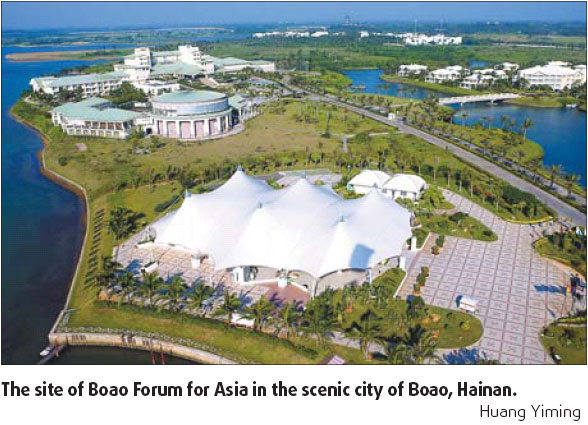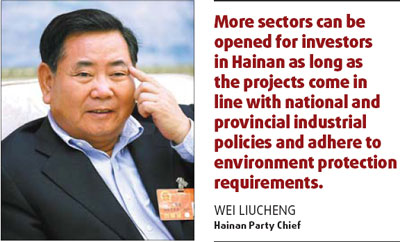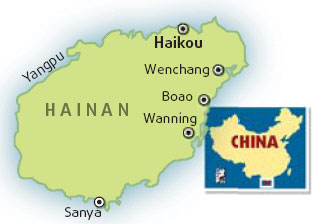Island that reflects a nation's success

Hainan Party Chief Wei Liucheng says the province must take the lead in China's free trade zone construction, a strategy raised by the 17th National Congress of CPC.
"More sectors can be opened for investors in Hainan as long as the projects come in line with national and provincial industrial policies and adhere to environment protection requirements," Wei says.
"The Yangpu Free Trade Port Area in the island's northwest can broaden its bonded area and develop into a free trade region."
This year marks the 20th anniversary of the founding of the Hainan special economic zone (SEZ), one of the five SEZs established since 1980. The others are Shenzhen, Zhuhai, Shantou and Xiamen, all in southern China.
In Hainan, the enterprise income taxation rate for foreign investors is only 10 to 15 percent. They are also exempt from all local income taxation.
Hainan Governor Luo Baoming says the province has grown into a middle-level income area, which enjoys rapid economic development and a booming culture.
"Hainan offers new industries, a tropical high-yielding agricultural base and it is a wonderland for tourism," Luo says.
Over the past 20 years, the province has progressed from a poor and backward remote island into a prosperous economic area.
Last year, its GDP totaled 123 billion yuan ($17.6 billion), a great leap from the 5.7 billion yuan generated in 1987.
Meanwhile, its GDP value per capita reached 14,631 yuan, 5.4 times of that in 1987.

Different from the other four zones, Hainan SEZ is a province rather a city. The island boasts remote rural areas as well as large and medium-sized cities.
As one of the five special economic zones, Wei Liucheng says the island represents "a miniature of the country".
Hainan hosts the Boao Forum and it is home to the only free trade port area in southern China. According to Wei, the province has benefited economically from "large enterprises" and "large projects", which have been initiated over the past few years.
Wei adds that the use of new technologies in projects such as an 8 million-ton oil refinery and a 1 million-ton paper pulp project will greatly reduce their environmental impact.
Over the past four years, the island's air quality has also been high. "We can achieve a win-win situation with both economic development and environment protection," Wei says.
Boasting similar natural attractions as Hawaii, Bali and Phuket, tourism has always been a steady industry in Hainan.
"It is the characteristic industry for the island," says Luo Baoming. "Hainan is striving to become a world-class vacation destination."

To attract more high-end tourists from abroad, the island will overhaul services such as eateries, accommodation, sightseeing, shopping and entertainment.
Last month the State Council urged various departments help out with Hainan's tourism development.
A document produced by the council listed among its plans the development of four duty free shops this year in Haikou, Sanya, Qionghai and Wanning.
Hainan's agricultural sector has also continued to thrive. The island is a national production base for fruit and vegetables and the nation's largest producer of natural rubber.
Last winter it produced 3 million tons of fruit and vegetables, of which nearly 75 percent was sold in other provinces.
(China Daily 04/10/2008 page17)








